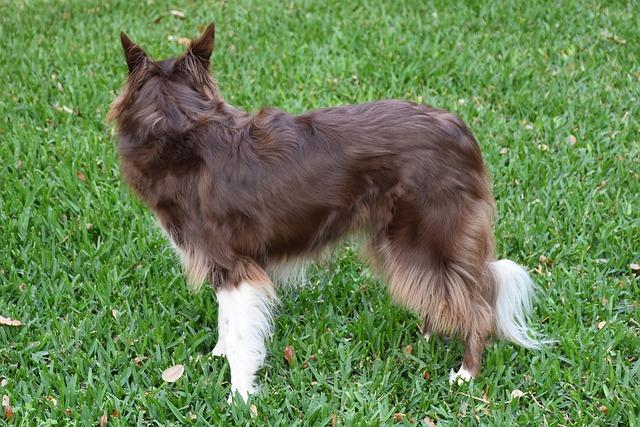Grooming is an essential part of keeping our furry companions healthy and happy, but for some dogs, the mere sight of a brush or the sound of running water can trigger anxiety and fear. As loving pet owners, it’s important to approach this challenge with patience, understanding, and a gentle touch. In this guide, we’ll explore effective strategies to help ease your dog’s grooming anxieties, transforming these moments from stressful to serene. Whether you’re a seasoned pet parent or new to the world of canine care, these tips will help you build trust and confidence with your dog, ensuring that grooming becomes a positive experience for both of you. Let’s embark on this journey together, creating a calming and comforting environment where your dog can feel safe and secure.
Understanding Your Dogs Fears: Building Trust and Comfort
When it comes to grooming, many dogs can feel anxious or fearful, which is why building trust and comfort is crucial. Begin by creating a positive association with grooming tools. Introduce the tools gradually and allow your dog to sniff and explore them at their own pace. Reward your furry friend with treats and praise to reinforce a sense of security.
- Start slow: Begin with short grooming sessions and gradually increase the duration as your dog becomes more comfortable.
- Create a calming environment: Play soft music or use calming scents to help your dog relax during grooming.
- Use gentle techniques: Opt for gentle brushing and handling, being mindful of your dog’s body language and comfort level.
- Practice patience: If your dog shows signs of stress, take breaks and provide reassurance before continuing.
By prioritizing your dog’s emotional well-being, you’ll not only make grooming a less stressful experience but also strengthen the bond between you and your pet. Remember, patience and consistency are key in transforming grooming time into a positive experience.
Creating a Calming Environment: Setting the Stage for Stress-Free Grooming
Crafting a serene space for grooming your nervous pup can transform the experience from stressful to soothing. Begin by selecting a quiet area in your home where distractions are minimal. Soft lighting can help create a tranquil atmosphere, and the use of calming scents like lavender can have a soothing effect. Ensure the room temperature is comfortable and have a cozy blanket or towel available for your dog to rest on. Playing gentle, instrumental music or using a white noise machine can also help drown out any unsettling sounds.
- Remove clutter: A tidy space can prevent additional anxiety and create a sense of order.
- Use non-slip mats: These provide stability and prevent slipping, which can be scary for a nervous dog.
- Keep grooming tools within reach: This allows for a smoother process without unnecessary breaks that could heighten anxiety.
- Introduce familiar objects: Bringing in a favorite toy or blanket can provide comfort and reassurance.
By carefully designing the grooming environment with your dog’s comfort in mind, you can help ease their fears and create a more pleasant grooming experience for both of you.
Step-by-Step Desensitization: Gradual Exposure to Grooming Tools
Desensitizing your dog to grooming tools can be a gentle and rewarding process. Begin by introducing each tool separately, allowing your furry friend to sniff and inspect them in a calm environment. Consider using a positive reinforcement approach by offering treats and praise when your dog interacts with the tools without showing fear. Gradually increase the exposure time while maintaining a relaxed atmosphere.
- Start with the least intimidating tools like combs or brushes.
- Move on to more complex tools such as nail clippers or electric trimmers.
- Introduce each tool over several days, allowing your dog to build confidence.
- Use short sessions to avoid overwhelming your dog.
Remember, patience is key. Consistent, positive experiences will help your dog associate grooming tools with comfort rather than anxiety. Celebrate small victories and adapt the pace based on your dog’s comfort level, ensuring each session ends on a positive note.
Positive Reinforcement Techniques: Encouraging Cooperation and Confidence
To help your dog feel more comfortable with grooming, it’s essential to use positive reinforcement techniques that foster cooperation and build confidence. Start by associating grooming tools and the grooming area with positive experiences. You can achieve this by offering treats and praise every time your dog approaches these items voluntarily. This creates a positive association, turning potentially scary objects into symbols of reward and comfort.
- Gradual Desensitization: Begin by introducing the grooming tools slowly, allowing your dog to sniff and investigate them without any pressure.
- Short Sessions: Keep grooming sessions brief and gradually increase their duration as your dog becomes more comfortable.
- Interactive Play: Incorporate playtime before and after grooming to help your dog associate the process with fun and relaxation.
- Gentle Touch: Use gentle and soothing motions, always being attentive to your dog’s body language to ensure they feel safe.
By consistently using these techniques, you’ll create a trusting environment where your dog feels secure and willing to cooperate during grooming sessions. This approach not only makes the process more enjoyable for your pet but also strengthens the bond between you both.

